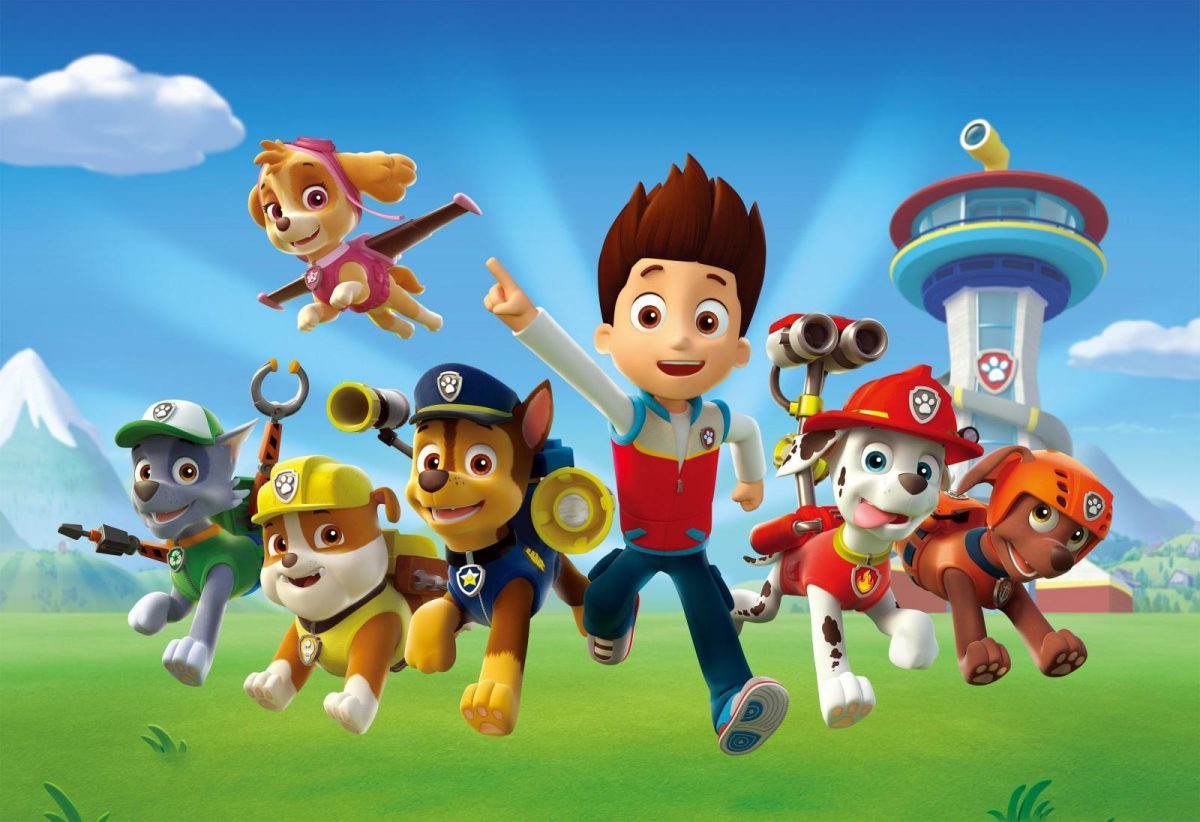By Danielle Gruber
With the advent of social media and technology, interaction via mediums other than screens has become somewhat of a rarity. Walking the high school hallways, you will find the best of friends demonstrating their telepathic communication abilities as they walk side by side with their eyes glued to their phones. Going out to a restaurant or the movies, you will find awkward first-date couples scrolling through their Snapchat and Instagram feeds to avoid speaking at all costs. While it may sound cliche, there is something to be said for the importance of actual, face-to-face socialization.
While this type of socialization may be a daunting task for some, board games are the perfect chance to interact for social butterflies and web-browsing spiders alike. Video games and other electronics-based entertainment are already ingrained in our culture — board games merely remove the screen that separates players. Board games are the perfect activity for any party or gathering, and if you’re looking for a place to start, then this list has got you covered.
The Metagame
The Metagame is the best game for sparking conversation and curing awkward silences. It opens discussion for topics ranging from high art to cheap entertainment, creating a venue other than social media for you and your friends to share as well as argue your opinions. The game includes 200 culture cards featuring civilization’s greatest achievements, such as Mona Lisa and Ms. PacMan, and 100 opinion cards that say things like “Which feels like first love?” or “Which is a sign of the apocalypse?” There are seven unique games to play (even more if you count the fan-created versions that can be found online), making the game highly replayable. Most involve matching the culture and opinion cards, and in this sense, the game somewhat resembles Cards Against Humanity. However, all game options have an innovative twist. For example, my favorite version is Metaquilt, in which you can match an opinion card to up to four culture cards or a culture card to up to four opinion cards. When matching to multiple cards, players have to make arguments for why their card can be described by (for a culture card) or describe (for an opinion card) all adjacent cards, which becomes very difficult. The game is further elevated due to the ability of other players to challenge the person playing his or her cards that turn, often resulting in heated debate that makes for sidesplitting entertainment.
While this game is much more intellectually stimulating than Cards Against Humanity, where it might fall short for some players is some of the obscure (for our generation, at least) references made in the culture cards. In playing this game with my friends, there were instances in which we did not know the subject described in the culture card, for example Waiting for Godot, “Samuel Beckett’s 1953 play about the absurd futility of existence’, Enron, the “scandal-ridden American energy corporation”, or the Treachery of Images, “René Magritte’s playfully conceptual 1929 painting.” However, this is not necessarily a drawback. First, you can usually figure out how to use the card from the description of the subject provided (or Google), and second, you will find yourself becoming more cultured after playing multiple rounds and acquiring knowledge of famous people, events, and innovations. Overall, I would recommend this game for any group of people who enjoy exercising their creative ability and want an elevated version of Cards Against Humanity.
Photosynthesis
In this beautifully designed game, all players are accorded an arsenal of seeds, saplings, and trees that comprise their forests. As the cardboard sun rotates each turn and shines on different sections of the forest ground, the trees use this energy to grow and develop into progressively larger trees capable of providing more points. The artwork is exquisite, and the three-dimensional setup fit with cut-out trees creates the appearance of a real forest. The mechanics are easy to learn as the game pieces help guide players through their turns. Everything has a labeled cost, making purchases and upgrades easy to understand and quick to carry out.
There is a competitive element to the game, as you can use the shadows of your growing trees to hinder your opponents from receiving sunlight on certain turns. At the four-player count, which is the maximum, competition is fierce for prime real estate and the game can become intense. Since trees can block others from earning light points, there are plenty of times when you can occlude an entire row of your opponent’s vegetation with a well-placed, tall tree. However, you can never become too comfortable; the board state can change dramatically in between turns, meaning players need to be flexible and ready to react.
As accessible as Photosynthesis is, it requires foresight and careful consideration, which players may only grasp after playing multiple times. Decisions about where to place your trees and at what time to harvest them can make or break a player’s performance. Additionally, there is an inherent balance of risk and reward for players to struggle with. While higher-level trees earn you more light points, they don’t offer any large-scale benefits until they are cut down. Players have to plan ahead in order to evaluate the consequences that their actions might have in later turns, leading to more thorough contemplation of placements and purchases as the game progresses. This often means the first round is a quick ramp up, with the second round containing the most actions and longest turns. As the final round approaches and people attempt to maximize their points, the ability to interact with a space on the board once per turn slows down the pace and can make the game lackluster if you lack points and resources. This game requires a fair bit of strategy, and I would recommend this game for a group of people who are willing to learn the rules and stay invested in the game without becoming distracted.
Competition Kitchen
If you love watching competitive cooking shows, then Competition Kitchen is the game for you. Whether you are a brilliant chef, a foodie, or someone who sets the kitchen on fire when attempting to microwave a bag of popcorn, you can enjoy this deliciously ingenious game. It is like playing “Chopped” at home, but instead of food and cooking equipment, you have playing cards and imagination.
Each round, one or more players are the judge, and the rest of the players are chefs. Every chef takes ingredients from the protein, vegetable, and flavor decks and, after the judge reveals the challenge, they choose which selections they will use in their final concoctions. Before the chefs can share their creations, the judge unveils a secret ingredient that must be incorporated into each dish. Chefs are then tasked with preparing a meal that best suits the given challenge, making sure to explain the cooking methods and culinary skills they used in executing their dishes. After all the chefs take a shot at wooing the judge with their gastronomical innovations, a winner is declared, and the next player at the table becomes the new judge. At the end of the game, the player with the most challenges won is the champion.
While this game is incredibly fun, the limited amount of cards in each category does mean you have to reshuffle the cards more often than in other card games. Personally, I did not find this to be much of a problem, but if you do not like repetition, then you might find the card variety to be lacking. I would recommend this game for any group that wants a unique playing experience with a strong basis in creativity.
Splendor
For those who enjoy strategy but like clear-cut rules, Splendor provides an enjoyable game of chip-collecting and card development that is accessible to even the most forgetful friends. Players are merchants of the Renaissance, attempting to acquire as much wealth as possible via their gem mines. Each turn, you can either take resources or purchase a gem, which counts as a permanent resource toward other gems. Gradually, players build up their own economies, aiming to buy the most expensive gems for points. To win the game, players must reach 15 prestige points before their opponents.
The game does an excellent job of balancing deep strategy with moments of excitement and interaction. Players soon learn to glean their opponents’ ambitions from their gem collections, at which point they can choose to buy and deplete resources that other players need. In my experience, those who have only played once or twice see the game as too luck-driven. As people play more, however, the subtle strategy necessary for winning becomes apparent. Choosing when and how often to obstruct others’ plans, for example, is one of the elements of planning the game can offer. I do admit that without the ability to reserve cards and the notably limited supply of gold, the game’s outcome would be mostly a matter of chance, but as it is, the game is an excellent introduction into strategic games.
Codenames
Codenames is a cooperation-based word game that anyone can play. It scales well with any number of people and requires players to think with both prudence and creativity. The group first forms into two teams, with one person from each designated as the spymaster. The job of the spymasters is to invent single-word clues that guide their teammates toward particular word cards laid out in a grid. The hint can be anything, from an obscure reference you think only your friends might be able to decipher to a word that simply rhymes with the target. However, the team is not privy to the spymaster’s intent, creating amusing moments in which a team talks their way out of right answers before the spymaster’s very eyes.
Coming up with straightforward clues is more difficult than it seems, which can lead to moments of quiet as the team desperately think of links. However, it also makes things far more exciting, because guessing wrong can sometimes score points for the other side, or even result in an instant loss. Mistakes occur frequently in Codenames, partially because players inevitably fail to spot a word or two, but also because the minds of teammates are not always in complete synchronization. Team members can disagree about the meaning of a clue or unanimously declare their decision; either case can result in a faulty selection if the word-guessers are not on the same page as the clue-giver. If such unexpected setbacks are frustrating for you, or if you do not like the pressure of deciding between two words that could determine whether your team is victorious or suffers humiliating defeat, then this is probably not the game for you. I would recommend this game for those who want a game that requires elements of cooperation and cleverness and has moments of intensity and silliness.
Exploding Kittens
Exploding Kittens is a kitten-inspired version of Russian Roulette in which players take turns drawing cards until pulling an exploding kitten and losing the game. The deck is made up of cards that prevent death via explosion by peeking at cards before drawing, forcing opponents to take multiple cards, or shuffling the deck. The game gets more intense with each card drawn because as the width of the deck shrinks in size, players are put at higher risk of pulling a lethal card and combusting in a fiery ball of feline hyperbole.
Exploding Kittens if a great party game in that it is quick to learn but still offers plenty of challenges to keep both new and experienced players entertained. The instructions, which only take up one page of the manual, are explained clearly and allow for players to get the hang of the game quickly. Once players comprehend the flow of the turn sequence, which takes only a few turns, they are able to utilize cards’ special effects to their fullest and successfully bluff their way towards getting the other players to explode. While this is definitely a game that rewards patience, concentration, and a good poker face, the game is heavily based on luck. The design of the game, including the hilarious illustrations and references, make the game extremely fun to play. I would recommend this game for a silly group that wants a game full of laughs.












